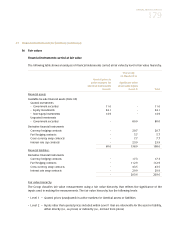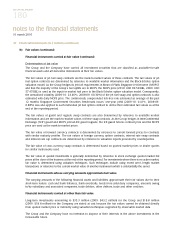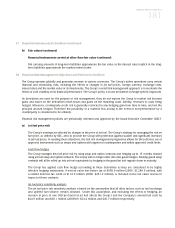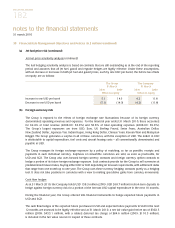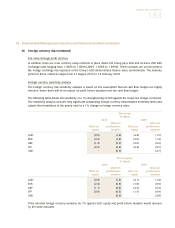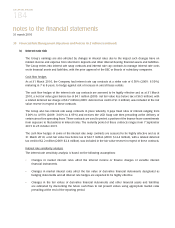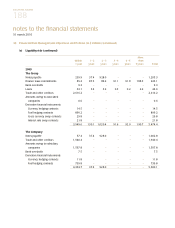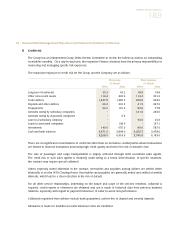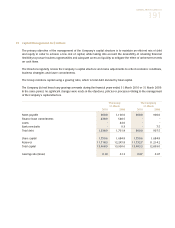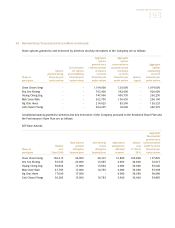Singapore Airlines 2010 Annual Report Download - page 191
Download and view the complete annual report
Please find page 191 of the 2010 Singapore Airlines annual report below. You can navigate through the pages in the report by either clicking on the pages listed below, or by using the keyword search tool below to find specific information within the annual report.
ANNUAL REPORT 2009/10
189
38 Financial Risk Management Objectives and Policies (in $ million) (continued)
(f) Credit risk
The Group has an independent Group Debts Review Committee to review the follow up actions on outstanding
receivables monthly. On a day-to-day basis, the respective Finance divisions have the primary responsibility for
measuring and managing specific risk exposures.
The maximum exposure to credit risk for the Group and the Company are as follows:
The Group The Company
31 March 31 March
2010 2009 2010 2009
Long-term investments 35.3 43.2 18.8 18.8
Other non-current assets 114.4 403.6 114.4 391.6
Trade debtors 1,347.8 1,485.5 958.0 994.9
Deposits and other debtors 66.3 241.9 41.9 207.6
Prepayments 92.6 101.9 82.0 77.8
Amounts owing by subsidiary companies - - 141.0 284.6
Amounts owing by associated companies - 0.4 - -
Loan to a subsidiary company - - 50.0 25.0
Loans to associated companies - 138.5 - 137.1
Investments 140.6 655.6 80.0 587.6
Cash and bank balances 4,471.9 3,848.0 4,260.7 3,458.0
6,268.9 6,918.6 5,746.8 6,183.0
There are no significant concentrations of credit risk other than on derivative counterparties where transactions
are limited to financial institutions possessing high credit quality and hence the risk of default is low.
The sale of passenger and cargo transportation is largely achieved through IATA accredited sales agents.
The credit risk of such sales agents is relatively small owing to a broad diversification. In specific instances,
the contract may require special collateral.
Unless expressly stated otherwise in the contract, receivables and payables among airlines are settled either
bilaterally or via the IATA Clearing House. Receivables and payables are generally netted and settled at weekly
intervals, which lead to a clear reduction in the risk of default.
For all other service relationships, depending on the nature and scope of the services rendered, collateral is
required, credit reports or references are obtained and use is made of historical data from previous business
relations, especially with regard to payment behaviour, in order to avoid non-performance.
Collaterals requested from debtors include bank guarantees, cash-in-lieu of deposit and security deposits.
Allowance is made for doubtful accounts whenever risks are identified.


